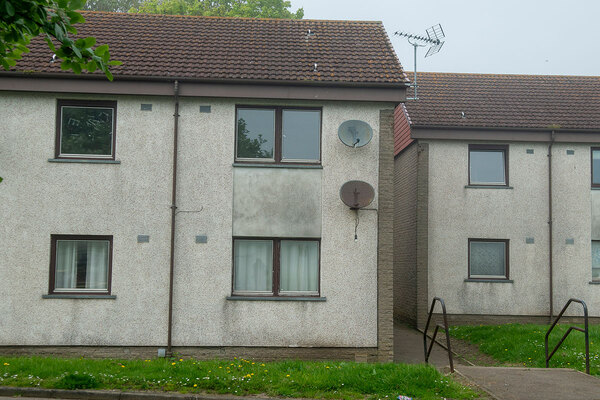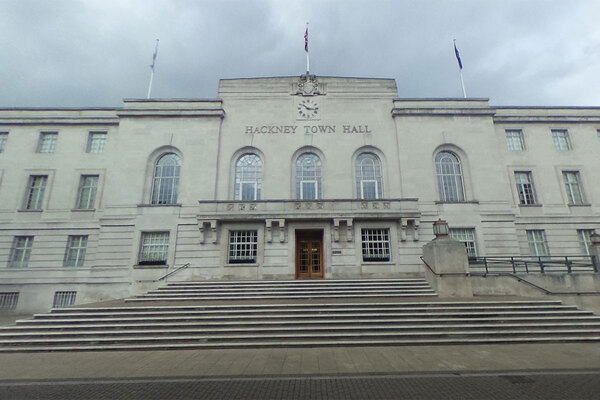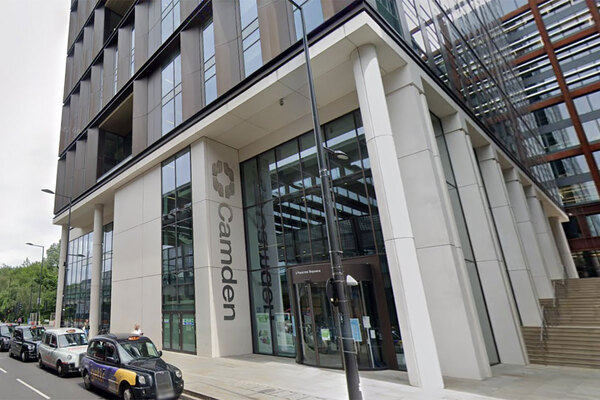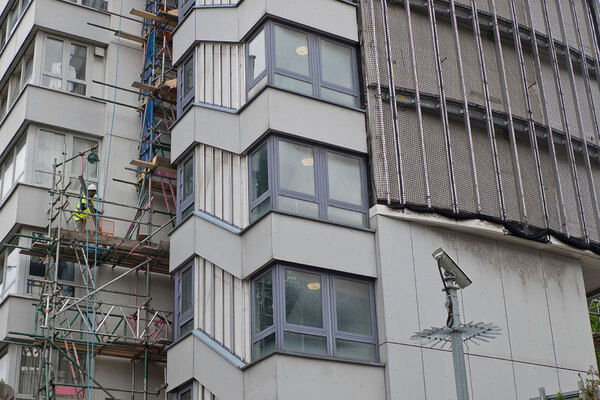LFB officer feared pre-Grenfell cladding warning would ‘let the cat out of the bag’ about extent of dangerous systems
A senior officer in the London Fire Brigade (LFB) feared “letting the cat out of the bag” if it warned housing providers about combustible materials on external walls in the aftermath of a pre-Grenfell tower block fire, the inquiry heard today.
Assistant commissioner Dan Daly was concerned about the potential costs for building owners and local authorities following the Shepherd’s Court blaze in August 2016, he said today.
During that fire, flames spread across five floors after breaking out of a kitchen window, resulting in a partial evacuation of the building. Testing in October 2016 revealed this spread to have been fuelled by window panels made of polystyrene and timber and covered over with steel sheets.
In an email in October, an LFB colleague wrote that “this fire adds to the concern about understanding of… the building regulations and the standard of work by the construction industry” and that the brigade should start “compiling evidence which allows us to lobby for improvement”.
However, another colleague responded: “Please bear in mind that every time we does [sic] this, there is a partnership at stake.”
Asked to explain this comment, Mr Daly said: “What I didn’t want to do was to suggest without evidence that this issue was widespread and cause unnecessary concern for residents and equally for local authorities, given, again, the number of issues they would be dealing with in the built environment and making sure that they spent their time attention and money in the right areas.”
“So is it fair to say that your approach at this point was a cautious one, given the relationship [LFB] wants to preserve with London local authorities?” asked Richard Millett QC, counsel to the inquiry.
Mr Daly said that he was “urging caution” until the LFB had a better understanding of how widespread uses of these materials were and the brigade’s powers to intervene.
A further email sent on 1 December 2016 noted that any direction the brigade gave to Hammersmith and Fulham Council, which owned Shepherd’s Court, would be “equally applicable to most other local authorities and private blocks and could involve significant expenditure”.
“This could be the proverbial ‘cat out of the bag’ on this issue. [Assistant commissioner] Daly has asked that we consider what the advice should be, implications of the advice… and how to get the message out,” said the email, written by a member of Mr Daly’s team.
“Does that tell us that the LFB knew, or at least suspected, that there were widespread failures to comply with building regulations across London in respect of external fire spread?” asked Mr Millett.
“I think we suspected that this wouldn’t be an isolated case,” said Mr Daly. “And again, part of writing to local authorities was to understand that completely rather than work on an assumption.”
“Was the fire safety department anticipating, in any way, that the Shepherd’s Court fire could prompt the kind of widespread reassessment of external cladding… that’s taken place follow following the Grenfell Tower fire?” asked Mr Millett.
Mr Daly said he could “never have envisaged” the extent of the issue, but repeated that it “wouldn’t be isolated”.
“In any regard, it would be an expensive process regardless of the number of buildings,” he said.
“Is that why the response to the Shepherd’s Court incident could be the, as it were, cat out of the bag?” asked Mr Millett.
“I think London Fire Brigade is largely a respected organisation,” said Mr Daly. “And if there [were] unfounded concerns raised without the evidence to support it, that could cause distress for residents living in these types of buildings [and] it could trigger a disproportionate response from building owner.”
In the event, the brigade only wrote to local authorities in April, warning them very specifically of the evidence of fire spread in panels beneath windows at Shepherd’s Court and advising them to assess this issue in their fire risk assessments.
Mr Millett asked why the letter did not warn of issues with combustible materials more generally – such as cladding systems. “Would it be right to characterise the warning in this letter as narrow, focused and incremental and based entirely and solely on what you can currently observe from the Shepherd’s Court fire?” asked Mr Millett.
Mr Daly said the LFB was hoping to get a “focused and targeted awareness” which could then “provide us with evidence to take issues further”.
The LFB letter to local authorities was released around the same time as Inside Housing obtained and published the report into the blaze and correspondence between the LFB and Hammersmith and Fulham under Freedom of Information laws.
This issue was not discussed in Mr Daly’s cross-examination.
Mr Daly was also asked why he had not considered sending “an internal message to all officers who might be incident commanders that they should not expect that external cladding systems would always comply” with building regulations.
He explained that crews at Shepherd’s Court had “acted in a way that we would have expected” and the operation had been a success.
Mr Daly was followed by Dr Sabrina Cohen-Hatton, the current chief fire officer at West Sussex Fire and Rescue and previously head of development at the LFB in 2015.
Dr Cohen-Hatton holds a PhD in psychology and has written widely about the psychology of firefighters acting as incident commanders. She helped draft national incident commander guidance in 2013.
Today, she described the LFB as “conservative”, with commanders reluctant to use their initiative in decision-making.
“The overarching emphasis in [LFB] was the adherence to policy and so most of the emphasis that I saw at incidents in [LFB] was focused on the application of policy,” she said. “I think it’s fair to say [LFB] is a very conservative fire brigade, and there is great comfort in following the procedures that are set out. I certainly saw evidence of that both at incidents and in post-incident debriefs.”
She added that the culture had been developed without “human factors in mind” or “consideration of how the process might be applied by people in reality”.
The inquiry has previously concluded that incident commanders on the night of the fire applied the stay put policy as “an article of faith”, and found that if the building was evacuated earlier “many more lives” could have been saved.
The inquiry continues tomorrow with further evidence from Dr Cohen-Hatton.
Sign up for our weekly Grenfell Inquiry newsletter
Each week we send out a newsletter rounding up the key news from the Grenfell Inquiry, along with the headlines from the week
Already have an account? Click here to manage your newsletters













